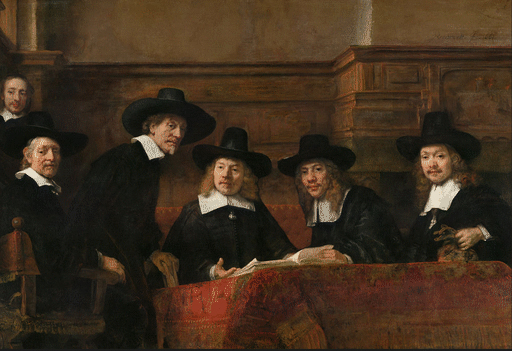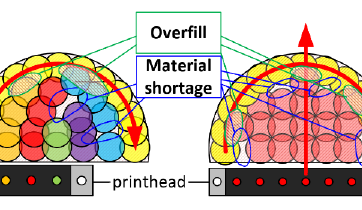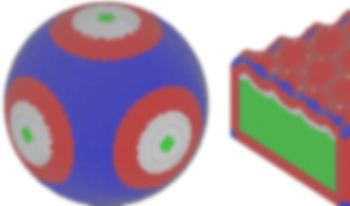
Naturalness is a complex appearance attribute that is dependent on multiple visual appearance attributes like color, gloss, roughness, and their interaction. It impacts the perceived quality of an object and should therefore be reproduced correctly. In recent years, the use of color 3D printing technology has seen considerable growth in different fields like cultural heritage, medical, entertainment, and fashion for producing 3D objects with the correct appearance. This paper investigates the reproduction of naturalness attribute using a color 3D printing technology and the naturalness perception of the 3D printed objects. Results indicate that naturalness perception of 3D printed objects is highly subjective but is found to be objectively dependent mainly on a printed object’s surface elevation and roughness.

3D printing with current multi-nozzle drop on demand print heads is lacking in terms of surface quality (without post treatment) or printing of overhanging structures without support material in contrast to single nozzle inkjet 3D printing (where the part perimeters are printed with a CNC motion), which in turn is lacking in terms of volume throughput (and therefore only used for the fabrication of small parts) as everything has to be printed with one nozzle. In order to print with enhanced surface quality and overhanging structures - free of support material – as well as reasonable productivity for the production of larger 3D parts, a printing process for industrial multi nozzle printheads with CNC printing motion was developed. First 3D parts printed with paraffin wax were produced and characterized to estimate the potential of this process.

Two-and-a-half and 3D printing are becoming increasingly popular, and consequently the demand for high quality surface reproduction is also increasing. Halftoning plays an important role in the quality of the surface reproduction. Three dimensional halftoning methods, that adapt the halftone structures to the geometrical structure of 3D surfaces or to the viewing direction, could further improve surface reproduction quality. In this paper, a 3D adaptive halftoning method is proposed, that incorporates different halftone structures on the same 3D surface. The halftone structures are firstly adapted to the 3D geometrical structure of the surface. Secondly, the halftone structures are adapted based on the normal vector to the surface at a specific voxel. Two simple approaches to approximate the normal vector are also proposed. The problem of edge artefacts that might occur in the previously proposed 3D Iterative Method Controlling the Dot Placement (IMCDP) halftoning method is discussed and a solution to reduce these artefacts is given. The results show that the proposed adaptive halftoning can combine different halftone structures on the same 3D surface with no transition artefacts between different halftone structures. It is also shown that using second-order frequency modulation (FM) halftone, in comparison to first-order FM, can result in more homogeneous appearance of 3D surfaces with undesirable structures on them.

Two-and-a-half and 3D printing are becoming increasingly popular, and consequently the demand for high quality surface reproduction is also increasing. Halftoning plays an important role in the quality of the surface reproduction. Three dimensional halftoning methods, that adapt the halftone structures to the geometrical structure of 3D surfaces or to the viewing direction, could further improve surface reproduction quality. In this paper, a 3D adaptive halftoning method is proposed, that incorporates different halftone structures on the same 3D surface. The halftone structures are firstly adapted to the 3D geometrical structure of the surface. Secondly, the halftone structures are adapted based on the normal vector to the surface at a specific voxel. Two simple approaches to approximate the normal vector are also proposed. The problem of edge artefacts that might occur in the previously proposed 3D Iterative Method Controlling the Dot Placement (IMCDP) halftoning method is discussed and a solution to reduce these artefacts is given. The results show that the proposed adaptive halftoning can combine different halftone structures on the same 3D surface with no transition artefacts between different halftone structures. It is also shown that using second-order frequency modulation (FM) halftone, in comparison to first-order FM, can result in more homogeneous appearance of 3D surfaces with undesirable structures on them.

Advancing in inkjet fused deposition modeling (FDM) color 3D printing enables to create dedicated aesthetical appeal. However, the complete fabrication of a target color remains limited due to the unusual mismatch in 3D color management systems. In particular, the 3D aspect that makes the 3D color systems different from standard 2D printing, such as ink and substrate characteristics, viewing conditions, and base materials. Therefore, to the best of our knowledge, there is no suitable established method that supports color reproduction for inkjet FDM color 3D printing. In this paper, we analyze the color profile of an inkjet FDM color 3D printer to obtain a color model that could bridge the gap between a digital design (as an input) and the actual 3D printed results (as an output). We then created the color model by reproducing each color mapped to every possible color pair to determine the closest color between the target and printing colors on the basis of the color difference value, which can be rendered in lieu of the original printing colors. We verify our proposed color model by printing the mapped color and conduct a color measurement to compare it with the target colors. From the experimental results, we showed that our mapped colors can represent those desired by the user with an 80% success rate, which can be matched through controlled conditions.

The surface appearance in additive manufacturing (AM) has attracted attention in recent years due to its importance in evaluating the quality of 3D printed structures. Fused Deposition Modeling (FDM), also known as Fused Filament Fabrication (FFF), holds an important share of the AM market because of its large economic potential in many industries. Nevertheless, the quality assurance procedure for FDM manufactured parts is usually complicated and expensive. The enhancement of the appearance at different illumination and viewing angles can be exploited in various applications, such as civil engineering, aeronautics, medical fields, and art. There are two steps in improving the microstructure and material appearance of printed objects, including pre-processing and post-processing. This study aims to elucidate the role of the pre-processing phase in the development of FDM parts through the assessment of color differences. For this purpose, a set of polymeric samples with different wedge (slope) angles were 3D printed using an FDM printer. The color difference between the elements is discussed and correlated with the pre-processing parameters. It is revealed that the wedge angle of the elements in the design, slicing process, and infill density could alter the color appearance of the printed parts in a predictable trend. This research suggests that low infill density and wedge angles in polylactide filaments can result in a more stable color appearance.

Recently, the three-dimensional (3D) printing technique has received much attention for the shape forming and manufacturing. In this work, for the first time, we present the fabrication of inkjet printed 3-diamentional (3D) low cost temperature sensor on a 3D shaped thermoplastic substrate suitable for packaging, flexible electronics and other printed application. The design, fabrication and testing of a 3D printed temperature sensor is presented. The sensor pattern is designed using computer-aided design (CAD) program and fabricated by inkjet printing with a drop-on-demand (DoD) using magnetostrictive inkjet printhead at room temperature. The sensing pattern is printed using commercially available conductive silver nanoparticles ink (AgNPs). The moving speed of 90 mm/min is chosen to print the sensor pattern. The inkjet printed temperature sensor is demonstrated and characterized with good electrical properties, showing a good sensitivity and linearity. The results indicate that the 3D inkjet printing technology may have a great applied potential in sensor fabrication.

As 3D printing becomes more prevalent, more attention is being paid to its ability to adequately reproduce the appearance of surfaces. Research into methods to accurately represent grayscale images through halftoning is well-developed in 2D printing, but work in the halftoning of surfaces in 3D printing is less developed. The halftoning method of tone-dependent fast error diffusion has been shown in 2D printing to be an effective means of achieving both high image quality and computational efficiency, making it an ideal algorithm to run in printing units where computational power is restricted. This work seeks to adapt tone-dependent fast error diffusion to halftone the surfaces of three-dimensional objects. Here, the ideal tone-dependent error diffusion parameters will be calculated for an image. Then, a surface traversal mechanism will be implemented to navigate the surface of a threedimensional object while error diffusion is applied to halftone it. The expected result is an algorithm that can halftone the surface of an object with quality approaching that of iterative methods, with a fraction of the processing that they require. Iterative methods currently produce the highest halftoning quality for 3D surfaces, but their use is limited due to the amount of computation they entail. The development of a tone-dependent fast error diffusion algorithm allows 3D halftoning to represent a continuoustone surface with comparably high quality, but the computation it requires is more appropriate for standard printers; thus, it improves on the quality of surface halftoning that most printing units can produce.

Three-dimensional printing makes it possible to create patient-specific, complex anatomical geometries that can be used for training, teaching and surgical planning. The human placenta is a vital organ that transports nutrients from the mothers' uterine circulation to the fetus via a complex vasculature. Complications of the fetal vasculature are increasingly being imaged with ultrasound and treated before birth using invasive fetal therapy. There is a need for human placenta training phantoms such as placental anastomoses that occur in monochorionic twin pregnancy and can cause twin-to-twin transfusion syndrome and fetal death, if untreated. In this study we developed two phantoms based on the human placenta using 3D printing technology: an ultrasound imaging phantom and an anatomical teaching model.